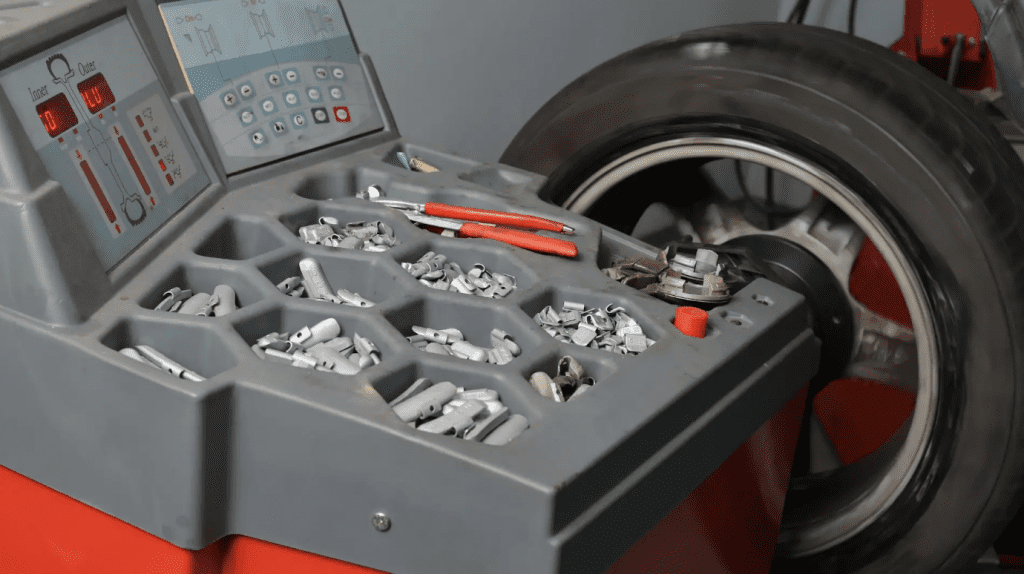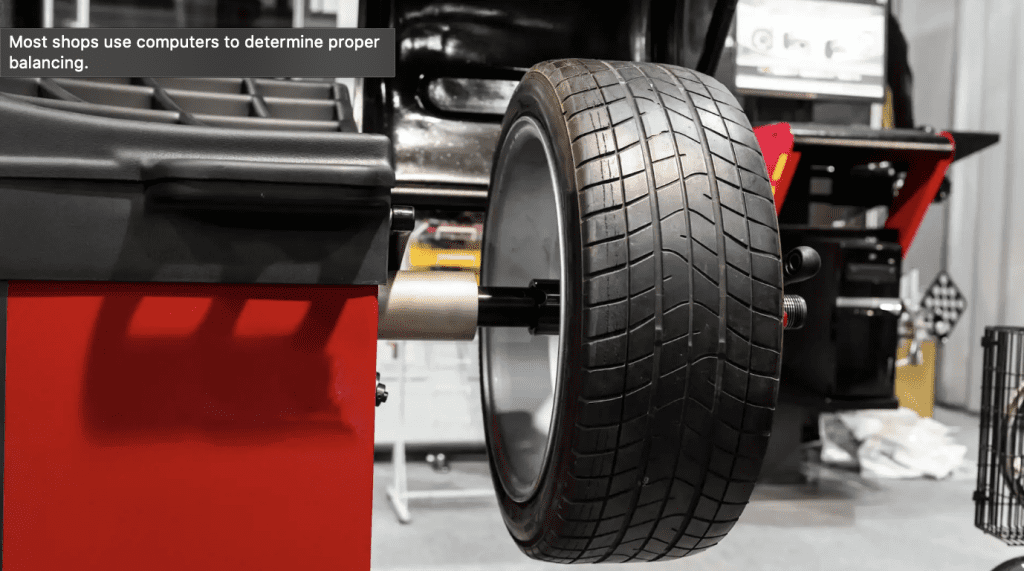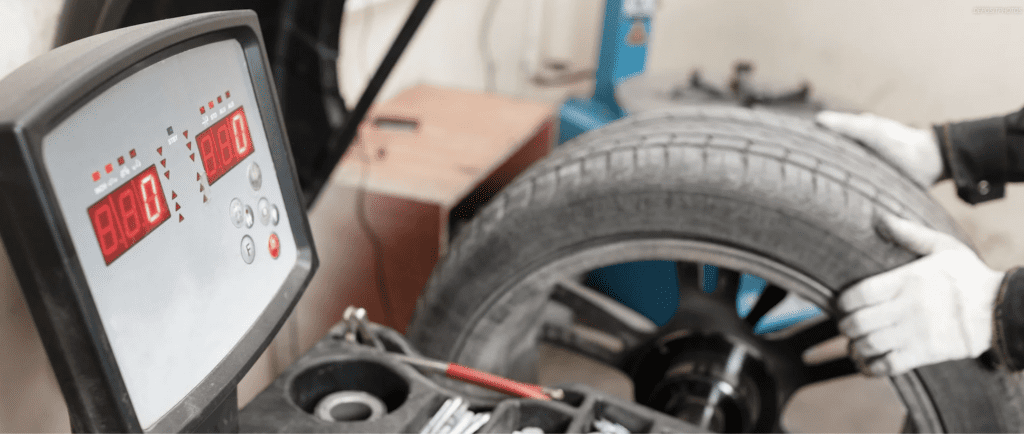
How Do I Know If My Tyres Need To Be Balanced?
That vibration you feel while driving down the highway could be a few things, but if you’re lucky it won’t be related to that curb you hit at Starbucks this morning. Your car could be out of alignment, you could have a damaged tyre, or, more likely, your tyres could be out of balance. When this happens, the little weights attached to the tyre either aren’t doing their jobs properly or are just in the wrong spot.
While it’s not the most serious problem you can have, driving on imbalanced tyres can cause a host of other issues, not the least of which is accelerated wear and tear on the rubber. Most people head to a tyre shop when they notice the vibrations that could be coming from an out-of-balance tyre, but that’s not totally necessary if you have the right tools.
In this post, Klinikar’s info editors break down tyre balancing and talk about why it’s important. We’ll also get into how you can do the job at home and why you might want to. The bottom line is that, no matter how you go about dealing with tyre balancing, it’s best not to ignore the problem. Your tyres, and ultimately your passengers, will thank you for keeping them balanced and turning comfortably.

What Is tyre Balancing?
tyre balancing involves a good pair of shoes, a hushed crowd, and a flaming ring. That’d be fun for us to watch you try to pull off, but it’s not actually what balancing tyres is all about. Your car has wheels, obviously, which have tyres. In order to spin and ride smoothly, the tyres need to have the vehicle’s weight evenly distributed around their circumference. This is done in a few steps by a tyre shop:
- The mounted tyre and wheel are placed on a tyre balancing machine.
- The machine spins the wheel and measures the vibrations that come from the rotation. This gives a readout to the tyre tech that tells whether or not the weight is distributed evenly, and if it’s not, how much weight to add and where.
- In most cases, the tyre tech can just add or adjust existing weights to even out the tyre imbalance, but in some cases, the tyre has to be removed and remounted. Sometimes, the tyre and wheel show heavy spots in the same place, so the tyre has to be remounted in a different position to help balance out the weight distribution.
What Causes tyres To Go Out Of Balance?
You. It’s your fault. That’s the short answer, but the longer answer here is that normal driving over rough roads can cause the tyre to go out of balance. In other cases, tyres just don’t wear evenly, which can have nothing to do with the driver’s behavior at all. Sometimes, tyre manufacturers let small defects slip past quality control, which can cause them to wear more in one place over another, and sometimes they’re just not installed properly. Even a tiny weight difference can make a big difference in how a vehicle feels as it rolls down the road.
How Can You Tell When It’s Time For a Balance?
Unlike some vehicle maintenance issues that tend to hide until the problem gets out of hand, you’ll know when it’s time to get a tyre balance or at least a check-up. An imbalance in the tyre will cause it to wobble and vibrate as the wheel starts to rotate. The faster the rotation, the more intense the vibration. If you feel a vibration in the steering wheel, that’s probably related to an issue with the front tyres’ balance, but a vibration that can be felt in your seat likely indicates an issue with rear-tyre balance.

Can I Balance My tyres At Home?
You can, but it’ll take some equipment that you probably don’t have just hanging out at home. You’ll need a tyre balancer, which can tell you where to place weights on the tyre to balance out heavy spots.
There is a way to balance your tyres without removing them from the vehicle, but it involves an annoying process of trial and error that won’t be for everyone. For that reason, we’re going to stick with recommending a balancing device.
What You Need to Know About tyre Balancing
Tyres
When we say tyres, we’re referring specifically to the rubber, not to the wheels themselves. We’ll note when the wheel is involved, but for most topics in this post, we’re only talking about the tyres.
Balance
Balance refers to the tyres’ ability to rotate smoothly without undesirable vibrations. Due to variations in manufacturing technologies and damage that could occur during shipping and handling, a tyre can be heavier on one side or another for various reasons.
Rotation
When we say rotations, we’re talking specifically about tyre and wheel rotation. This is different from your engine’s rotations per minute (RPM), which is a mechanical system that doesn’t have anything to do with tyres.
Weights
Weights are exactly what they sound like. They are placed at specific spots around a tyre to ensure that any heavy spots have a counterbalance to even them out on the other side of the tyre.

FAQs About Balancing tyres
You’ve got questions, Klinikar has answers!
Q. Can I Ignore An Out-Of-Balance tyre?
A. Well, you can, but you won’t be comfortable or safe while doing it. An out-of-balance tyre can make your car’s ride unbearable with vibrations, and it could affect safety if it’s distracting enough to take your attention off the road.
Q. So How Much Does It Cost To Balance A tyre?
A. Many tyre shops offer free balancing as part of tyre packages that are purchased from them, but you’ll have to pay for it in other cases. On average, plan to spend between RM60-80, depending on your vehicle, the tyres, and the shop.
Q. Ok, Then How Often Do I Need A tyre Balance?
A. You should have your tyres checked at each oil change, which is generally every 5,000 to 15,000 Km, to avoid letting a problem fester that could cause wear issues or safety problems with your vehicle. This doesn’t mean you’ll need a balance every time. It just means that you should be keeping on top of what’s happening with your tyres.
Q. Is tyre Balance Different Than Alignment?
A. Yes. Alignment refers to your vehicle’s wheels and how they’re positioned in relation to the road. Alignment jobs typically adjust things like camber, which is the angle at which the wheels sit on a car.
Q. Can tyre Balance Impact Fuel Economy?
A. tyres that are out of balance can cause improper wear and may lead to the engine needing to generate more power to keep them spinning at a consistent speed.

